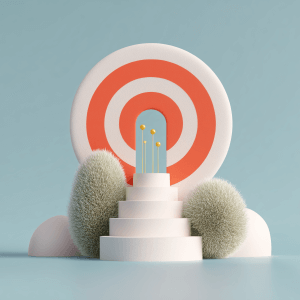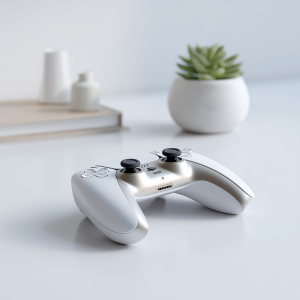Ever feel like time just slips away?
You’re not alone. Staying focused can be tough sometimes, especially with all the distractions around. You look up at the clock—boom, half the day’s gone. Actually, structured time management approaches can lift efficiency by roughly 20–40% (2). That’s a hefty improvement, right? Visual timers might be the simple, game-changing solution you never realized you needed. They’re not just for classrooms—they’re for anyone hoping to manage time better, stay on task, and feel more in control. In this article, we’ll explore how visual timers work, how to use them, and which tools can help you get started today.
New Key Takeaways
- Visual timers offer a live snapshot of how much time is left.
- Work intervals—short or long—are flexible tools that increase focus, especially for those juggling multiple projects.
- Structured visuals may yield a 25–35% boost in task completion for neurodiverse individuals (1).
- A blend of structured intervals and free-flow time can help creative tasks thrive.
- Placing a visible timer in your workspace can reduce procrastination by making time more tangible.
How Do Visual Timers Influence Your Perception of Time?
What Role Does Visual Feedback Play?
Visual timers make time impossible to ignore. Instead of plain digits, you see a shrinking bar or color-coded wedge—a daily reminder of how long you’ve got left. For folks who wrestle with focus—especially those with ADHD or fast-paced routines—this can feel like a breakthrough.
Key elements of visual feedback:
- Gentle, constant reminder of passing time.
- Minimizes mental calculations (“How many minutes left?”).
- Often calms anxiety by revealing steady progress.
“Visual timers strip time down to what you really need to see—how much is left.”
Table: Visual Timers vs. Traditional Clocks
| Feature | Visual Timers | Traditional Clocks |
|---|---|---|
| Displays time visually | Yes | No |
| Requires mental calculations | No | Yes |
| Helps with focus | Yes | Depends |
Structured approaches like the Pomodoro Technique use visual timers to split tasks into shorter chunks. It’s no coincidence some folks get up to 35% better focus (1). That shrinking pie chart can be your nudge toward deep work—and staying there.
How Can You Implement Visual Timers Step by Step?
Setting Up Timer Intervals
Start by selecting intervals that suit both your task and your natural attention span. Some people use 15-minute sprints for quick tasks; others stick with 25-minute Pomodoros. A few prefer 45-minute chunks for really diving in (2).
- Define Your Tasks: List everything you aim to complete today.
- Pick an Interval: If you’re new, test a 25-minute focus followed by a 5-minute break.
- Use a Visual Timer Tool: Try the Time Timer App or get a physical timer.
- Keep It Visible: Put it where you naturally glance every few minutes.
- Adapt & Adjust: If 25 minutes feels off, tweak the duration. Don’t be shy—find your sweet spot.
“A visual timer is like a buddy giving you gentle reminders, without the annoying shoulder taps.”
Integrating Timers With Your Schedule
To make visual timers part of your routine, weave them into your everyday flow:
- Time Blocking: Schedule certain hours for specific projects, which can save about 2 hours a day by reducing context-switching (2).
- Calendar Sync: If you use a digital calendar, align your intervals for a seamless routine.
- Breaks Are Sacred: Skipping breaks can zap energy and reduce productivity—tiny rests often recharge you.
- Evening Recap: At the end of each day, note what worked (and didn’t) so you can refine tomorrow’s intervals.
Which Tools Provide the Best Visual Timer Experience?
Comparative Analysis of Timer Apps
| App Name | Best For | Key Features | Price |
|---|---|---|---|
| Focus Booster | Pomodoro-style sessions | Simple UI, session tracking | Free/$2.99 monthly |
| Time Timer | Simplicity & Accessibility | Big countdown display, easy to customize | $2.99 (app) |
| Forest | Gamified focus | Grow virtual trees when you stay on task | Free/$1.99 (in-app) |
| Toggl Track | Detailed time tracking | Reports & analytics, multi-device sync | Free/$9 monthly |
“A good visual timer is like a personal assistant—no nagging, just helpful reminders.”
Advantages and Considerations for Visual Timers
Benefits in Time Awareness
- Immediate Visual Cues: You know at a glance how many minutes remain.
- Heightened Focus: Mild urgency wards off digital distractions.
- Measurable Productivity: The start-and-stop nature makes progress clear.
- Stress Relief: No vague deadlines lurking unseen; it’s all in front of you.
Potential Downsides
- Rigid Intervals: Freeform tasks might feel stifled.
- Over-Reliance: Relying too heavily on a timer may limit spontaneity down the road.
- Alarm Fatigue: If your timer goes off too often, you might start tuning it out.
“You want timers that keep you focused, not frazzled.”
Wrapping It Up: Are Visual Timers Really Worth It?
Visual timers transform the concept of minutes ticking away into something you can see—and that can make a world of difference. Studies point to productivity gains of 25–35% for people with focus challenges, plus overall efficiency boosts of 20–40% (1,2). If you thrive on structure, you’ll likely love them. If you crave more open-ended flow, sprinkle in some unstructured blocks. Give it a try. Who knows, maybe tomorrow you’ll notice time doesn’t slip away so easily.
Frequently Asked Questions
What is a visual timer, and how does it work?
A visual timer is any device or app that shows passing time through colors or shapes. It helps you see the remaining time more clearly than digits.
How can visual timers improve focus?
They bring time to the forefront, offering a subtle push to stay engaged—and a reason to ignore those pesky notifications.
Can visual timers help with time management?
Absolutely. Pair them with time blocking or the Pomodoro Technique for extra structure and clarity.
What are some popular types of visual timers?
Physical timers with a color-coded dial, apps displaying a pie chart, and gamified versions like Forest.
Are visual timers useful for kids?
Yes, they provide an easy way to see how much time is left for homework or chores, which can cut down on “just five more minutes” requests.
How can visual timers benefit people with ADHD?
They remove the burden of mentally tracking time and give consistent, external cues for staying on task.
Can I use visual timers with other productivity techniques?
Sure. Many folks blend them with the Pomodoro Technique, habit trackers, or scheduling tools.
What are common mistakes to avoid when using visual timers?
Choosing intervals too short or too long for your work style, neglecting breaks, or placing timers out of sight where they can’t help.









